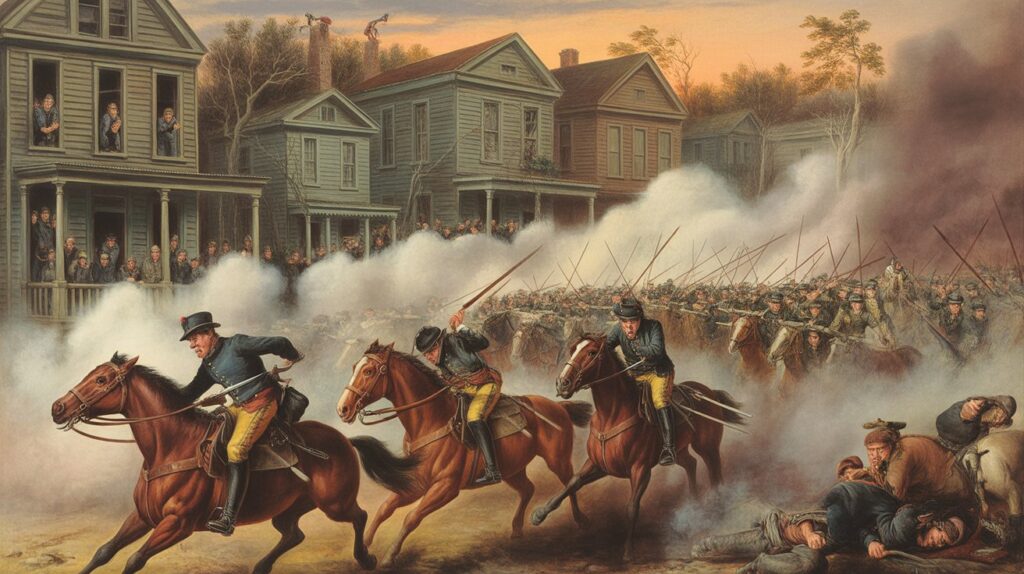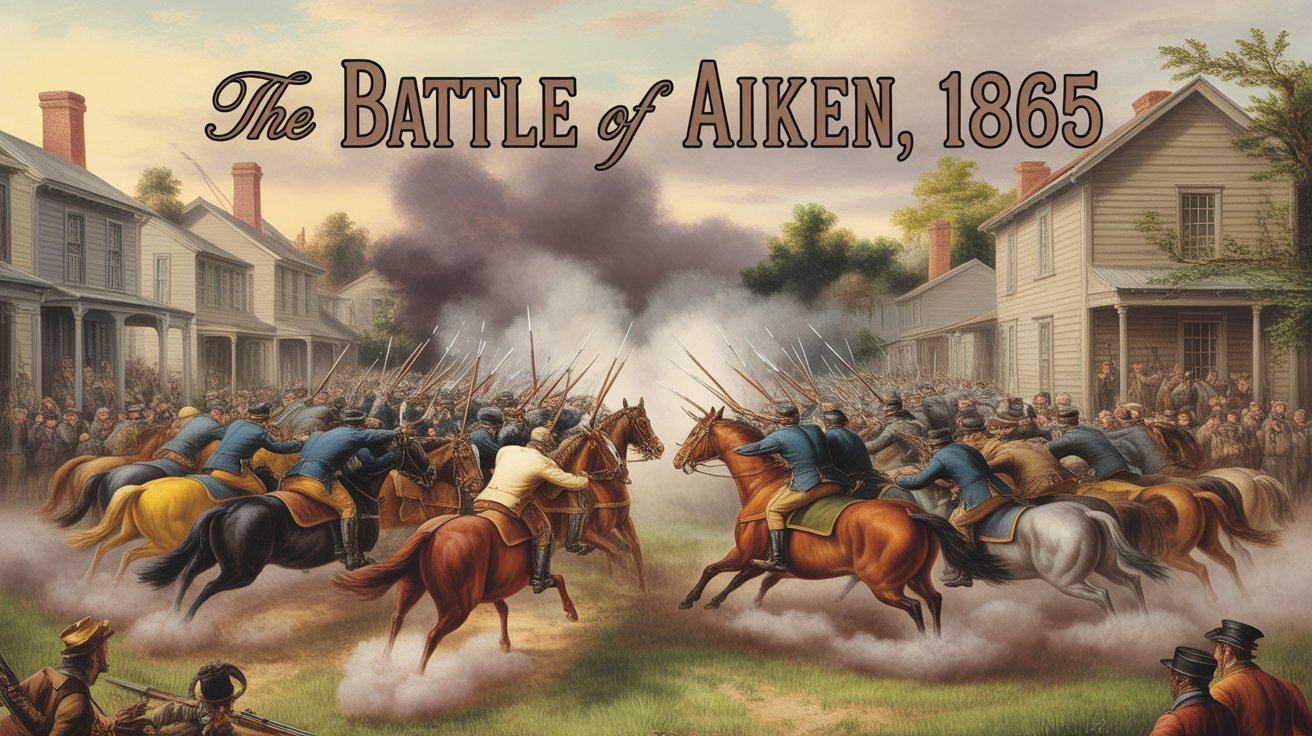If you’ve ever wandered into Aiken, South Carolina in February, you might notice something unusual. Cannons booming in the distance, cavalry riding past, and crowds gathered in fields—it feels like you’ve stepped back into the 1860s. That’s because this small Southern city still remembers one of its most dramatic moments in history: the Battle of Aiken.
A Small Town, a Big Clash
The year was 1865. The Civil War was nearing its bloody end, and Union General William T. Sherman had just completed his infamous March to the Sea. His troops were now pushing north through the Carolinas, leaving destruction in their wake. But in Aiken, Confederate cavalry commander Joseph Wheeler wasn’t about to let Union forces ride through unchallenged.
On February 11th, 1865, Wheeler’s men faced off against Union General Hugh Judson Kilpatrick in what was supposed to be a quick skirmish. Instead, it turned into a full-on battle right in the heart of town.
Kilpatrick vs. Wheeler: The Showdown
Kilpatrick was confident. He thought he’d surprise Wheeler’s forces and crush them fast. But Wheeler was tricky—he used the terrain to his advantage and baited Kilpatrick into a V-shaped trap. Union soldiers rode right into the open end, only to find themselves surrounded.
The fighting wasn’t just long-range musket fire—it was chaotic, up-close, and personal. Swords clashed, horses bolted, and gunfire echoed through Aiken’s streets. Local residents, peeking from their windows, must have seen scenes straight out of a nightmare.
A Rare Confederate Victory

By the time the smoke cleared, Wheeler’s troops had pushed the Union forces back. The Confederates claimed victory—one of the few in the closing months of the war. But in the bigger picture, it didn’t change the outcome. Sherman’s campaign kept moving, and just weeks later, the Confederacy was collapsing.
Still, for the people of Aiken, this win became a source of pride—a moment when a small Southern town stood its ground.
The Battle Lives On
Fast forward more than 150 years, and the Battle of Aiken isn’t just a page in a history book—it’s a full-blown annual event. Every February, locals and visitors gather for the Battle of Aiken Reenactment Festival.
We’re talking:
Hundreds of reenactors in full Civil War gear
Cavalry charges and cannon fire
Living history camps where you can see how soldiers ate, slept, and lived
Food stalls serving everything from barbecue to kettle corn
It’s part history lesson, part community celebration, and part time machine.
Why It Matters Today?
The Battle of Aiken might not have decided the Civil War, but it shows us something important: history isn’t always written by the biggest events. Sometimes, it’s the smaller, local battles that stick in a community’s heart.
In Aiken, the echoes of musket fire have faded, but the story hasn’t. Each February, when the cannons roar and the cavalry rides, you can almost feel the ground shaking like it did in 1865.
When did the Battle of Aiken take place?
The battle happened on February 11, 1865, during the final months of the American Civil War.
Who fought in the Battle of Aiken?
It was fought between Union cavalry under General Hugh Judson Kilpatrick and Confederate cavalry led by General Joseph Wheeler.
Where exactly did it happen?
The battle took place in and around Aiken, South Carolina, as part of the Carolinas Campaign.
Who won the Battle of Aiken?
The Confederates claimed victory, successfully pushing Union forces back. However, it didn’t change the overall outcome of the war.
Why is the Battle of Aiken remembered today?
It’s remembered as a rare Confederate win late in the war, and it’s kept alive through annual reenactments that attract visitors from all over.
Can I visit the battlefield today?
Yes! While much of the original area has changed, Aiken’s reenactment festival in February offers a vivid way to experience the battle’s history.

